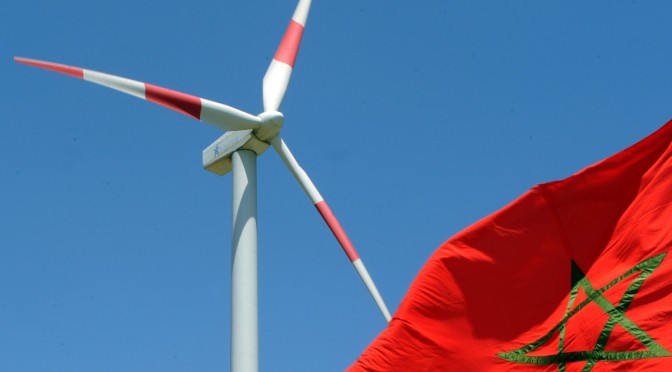Tarfaya is home to Africa’s largest wind farm and it generates enough power for 1.5 million homes, but it is only the start of Morocco’s green revolution.
The World Bank showed in 2015 that 97 percent of Morocco’s energy came from imported fossil fuel, but this is beginning to change.
Built within two years and opened in 2015, the plant in Tarfaya has the capacity for 300 MW.
Siemens, the company responsible for the 131 turbines, states on its website that “the renewable power from Tarfaya’s wind turbines is expected to offset 900,000 tonnes of CO2 emissions each year. ” This is equivalent to 150 million trees.
Wind energy in Morocco is a largely untapped market. The Moroccan Investment Development Agency estimates the country’s potential in wind power to be 25,000 MW, yet in 2010 the installed capacity was just 280 MW.
42 percent of Morocco’s energy will come from renewable sources by 2020, and the target for 2030 is 52 percent. Tarfaya’s wind farm, which is valued at USD 1.4 billion, is necessary to achieve this.
The energy it generates provides 15 percent of the 2000 MW wind energy target set by the Moroccan government, and each day the turbines generate enough electricity for a city the size of Marrakesh.
CNN has said that Morocco is “leading the charge against climate change,” but to do this, the Kingdom must use renewable energy sources other than wind.
Concentrated solar plant Noor 1 is just outside of Ouarzazate and is one of the world’s biggest solar plants. When its construction is fully completed in 2018, the plant will generate enough energy for a million homes, and perhaps more to be exported to Europe.
The Climate Investment Funds finance group has determined that the plant will decrease carbon emissions by about 760,000 tons each year.
The World Bank has even said that this plant will “reduce the country’s energy dependence by about two and half million tons of oil”.
By the end of 2015, Morocco had 1,770 MW of hydro power, the largest of them being the 465 MW Afourer Pumped storage station opened in 2004.
The Kingdom is keen to increase the use of hydropower, and in November 2015 it obtained a loan of EUR 35 million from the European Bank for Reconstruction & Development to renovate 12 of its small and medium-sized hydro-power plants.
Biomass is energy from organic materials, and due to the large amount of agricultural resources within Morocco, biomass within the country has the potential to generate 950 MW.
Additionally, the Green Morocco Plan, a recent project by the Ministry of Agriculture and Fishing, aims to obtain 400 MW by 2030 through “agricultural production and new regulations for waste management.”
This Green Morocco Plan aims to triple the income of almost three million people living in rural areas, but it is not the only project conscious of local communities.
The wind farm in Tarfaya gives MAD 400,000 to the area each year. This money is used for local projects like Tarfaya’s street lighting program, as well as to support local youth.
The plant also prefers to employ local residents – civil engineer Hafsa Tarfaoui works at the Tarfaya wind farm and says that when recruiting “the priority is finding a person from this area,” although this can be challenging when locals do not possess necessary qualifications.
A study conducted this year by Stanford University showed that Morocco had the potential to run only on green energy by 2050, and that this would create more than 88,000 jobs and give USD 3.5 billion to the Moroccan economy.
For this to happen, it is essential that Morocco listens to Abdeladim Lhadi, High Commissioner for Water, Forests and the Fight Against Desertification of Morocco, who said “we’ve done a lot, but we still have a lot to do in the coming years.”
moroccoworldnews.com


